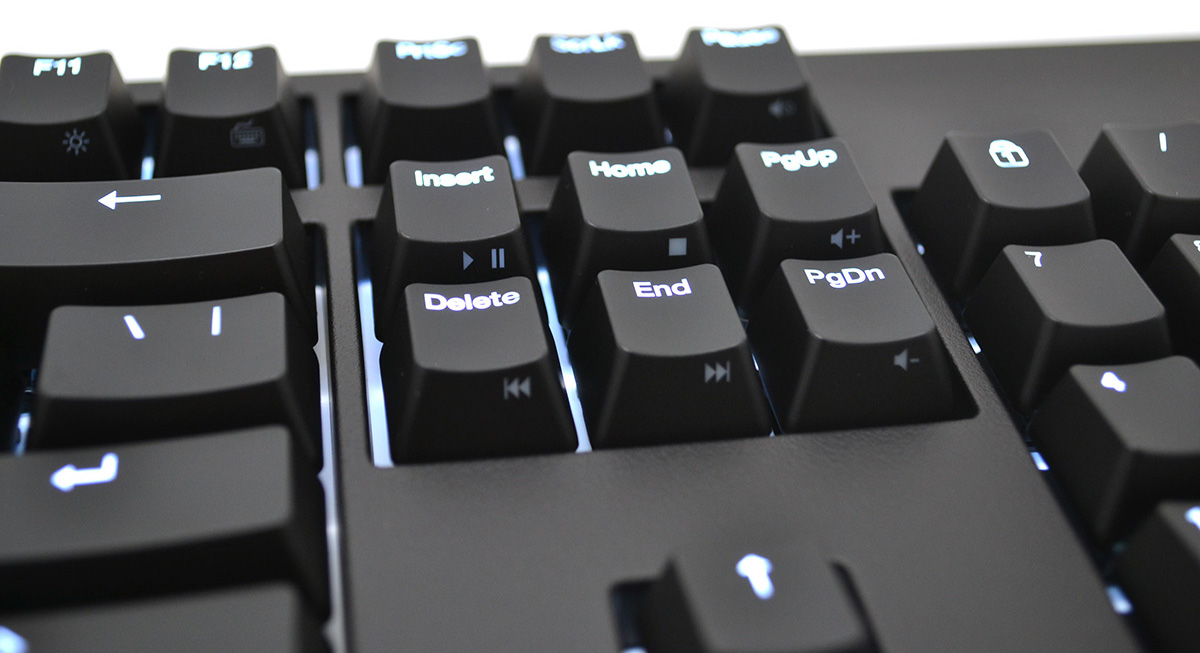Painless Keyboarding
What is your first thoughts in reaction to the term “mechanical keyboard”? Nostalgia? The obnoxious “clicky” sound you hoped to leave behind? If you’re relatively young, you may have no recollection of this product at all. If you’re a programmer, whose hands are on a keyboard for hours each day, then maybe, you’ve grown quite fond of these devices.
A few weeks ago, I was happily pounding away on my Apple keyboard — but even after years of use, it never felt right. The keyboard on my Macbook, and gleaming silver and white one on my desk, was fatiguing to use. At the time, I hadn’t connected the persistent hand pain to the object my fingers touched most, but it wouldn’t take long before I did.
That weekend, I again spoke at the annual Nodevember technology conference in Nashville, Tennessee. I’ll detail my time there in a future post, but for now, let’s focus on one specific moment. While sitting in the audience for Crockford’s closing keynote (and the staff’s farewell), the attendee sitting next to me pulled out a mechanical keyboard, and bade me feel the keys. For anyone other than a programmer, this would be quite strange — but in the world of ours, where the primary job title could be described as a cross between professional typists and scientists, it’s completely ordinary.
I worked several of the unlabeled keys. They felt stiff, but had a very nice tactile response, completely unlike the membrane keys that I was used to. Membrane keyboards, for the uninitiated, require the user to completely depress the button before an action is registered. By comparison, a mechanical keyboard does not require this, and instead, register the key press at roughly halfway. This, again, may sound odd: but to me, it felt completely magical. The action was so light, and I was rarely “bottoming out,” which is to say, depressing keys to their full depth.
Determined to find a keyboard like this of my own, I flew back into town and started searching. It didn’t take long before I encountered WASD Keyboards, a company from Fremont, California, and maker of CODE, a keyboard produced in association with Coding Horror author, Jeff Atwood. I researched the various types of switches and eventually decided on the Cherry MX Clears, one of the stiffest. After years of typing on a mushy, high-impact keyboard, I was determined to get that light, effortless action that I felt days before. I ordered.

For the next two days, I was deep in the weeds crafting an intense JavaScript application. At the end of my typing frenzy, I noticed that the joints in my hand were mostly pain free. This wasn’t normal: my joints have ached for years, specifically in my hand, which led to a recent diagnosis. When my doctor mentioned that I have Ehlers-Danlos Syndrome, a rare genetic disorder, I felt like it explained so much about my life over the last decade. The pain had a reason, which validated how I felt, even though there was nothing I could do about it.
Now, looking back over my experience with this keyboard, not only has it made me a better, faster typist, but the low-impact response (when compared to the membrane keys) has doubtless affected my health. I’m not a doctor, and these statements should not be construed as a diagnosis, but I’m writing this as a person who thought this hand pain would be part of my life forever. While it isn’t completely gone, it has lessened by a significant margin. Let that sink in.
While I’d obviously love for you, dear reader, to have a similar experience to mine, you probably don’t have the same symptom. The disease that drives my pain is incredibly rare, it still affects, at maximum, 1 in every 250,000 individuals. You might be one of them, but that isn’t the main point. What I want to drive home is this: the tools you’re using as a programmer can aid or hinder not only your productivity, but general well being. And tools are just that, tools: I’m using Vim, and it’s right for me; but it could be wrong for you. Nothing is worth fighting over. If it hurts you — or is in the way — dump it. Start over with a new tool. Because the only constant in this industry is change.
